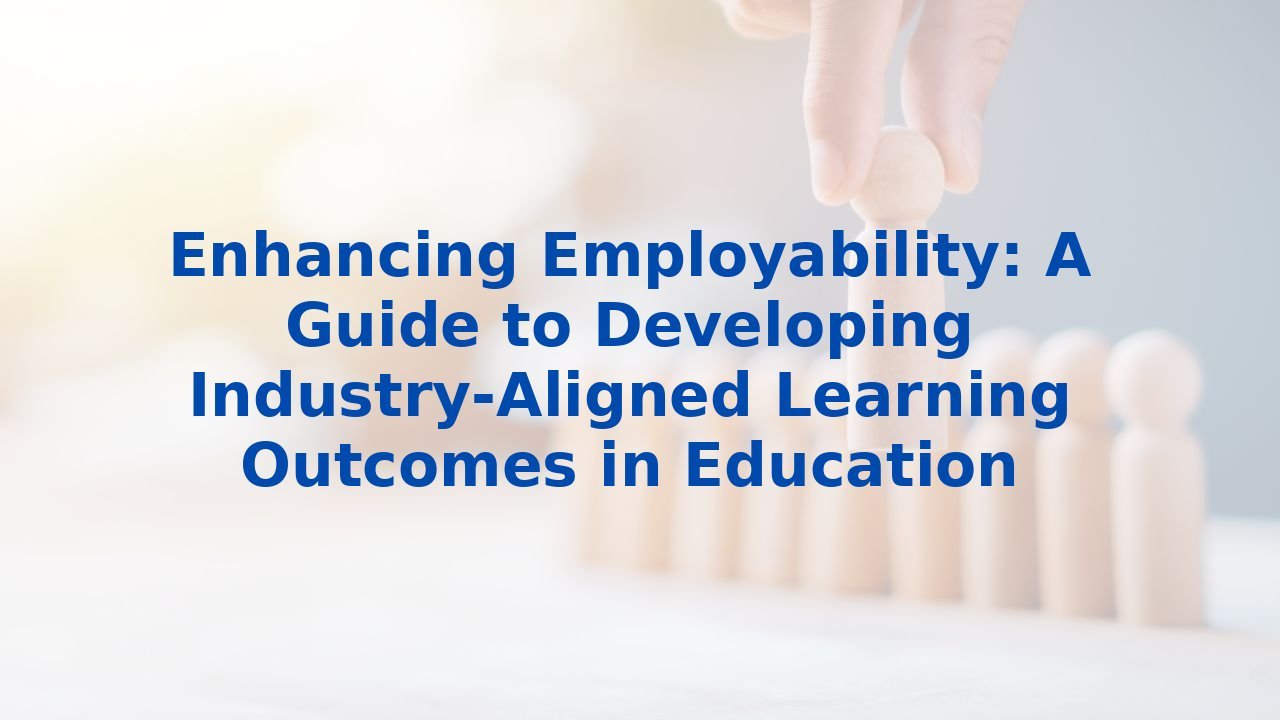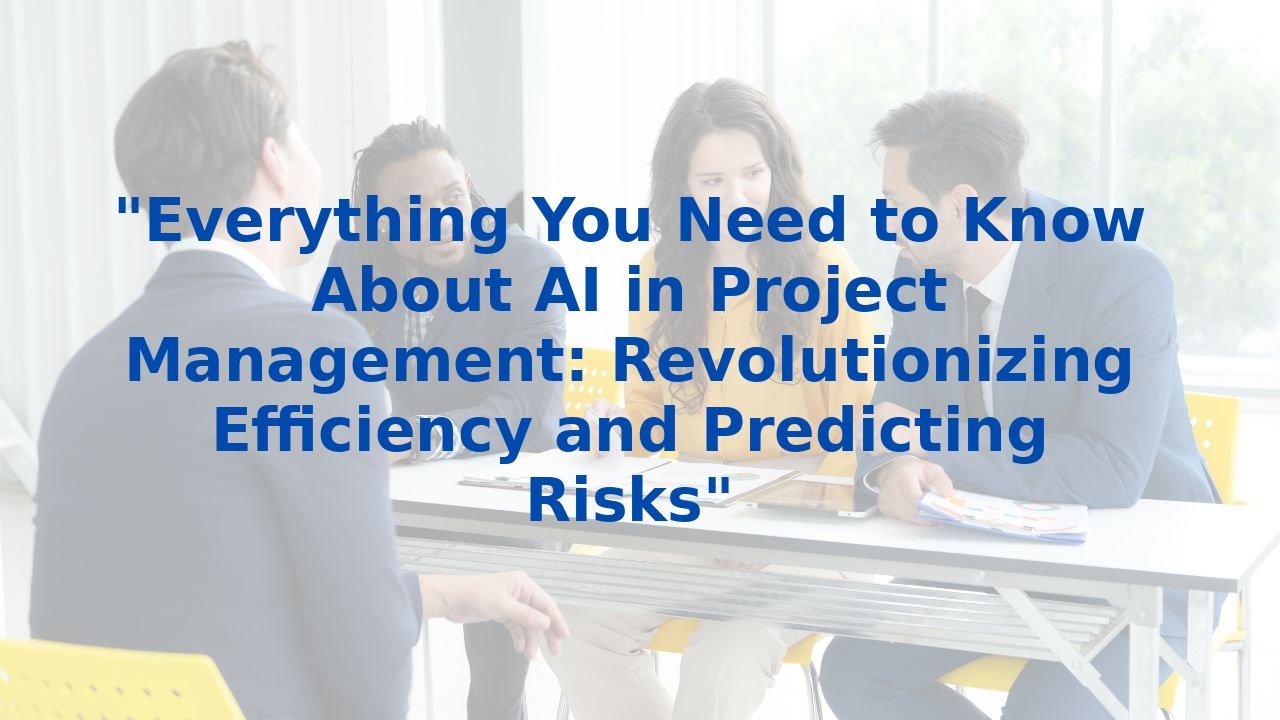Enhancing Employability: A Guide to Developing Industry-Aligned Learning Outcomes in Education
Enhancing Employability: A Guide to Developing Industry-Aligned Learning Outcomes in Education
Introduction
In a world that never slows down, where technology and business landscapes evolve at breakneck speed, our educational systems are tasked with a pivotal mission: to prepare graduates who are not only knowledgeable but also equipped with the practical skills that employers desperately seek. This is where the concept of industry-aligned learning outcomes comes into play. It's about creating pathways that lead students directly to career readiness. In this guide, we will explore the significance of these outcomes in education and the transformative role of artificial intelligence (AI) in shaping future-ready graduates.
The Importance of Industry-Alignment
Bridging the gap between education and the workforce is no small feat. Industry-aligned learning outcomes serve as vital links, ensuring that students acquire skills relevant to real-world demands. By honing in on the competencies that employers value most, educational institutions can significantly increase the employability of their graduates. The result? A workforce that not only possesses theoretical knowledge but is also ready to tackle the challenges of the modern work environment.
Strategies for Developing Industry-Alignment
Conducting Industry Research
Staying ahead means being informed. By conducting comprehensive research on current trends and skill requirements, educators can shape curriculum content that resonates with the ever-evolving job market. Understanding these dynamics is the key to creating programs that truly prepare students for their careers.
Collaboration with Subject Matter Experts
Engaging with industry professionals leads to valuable insights that inform curriculum design. Collaborating with these experts allows educators to craft programs that offer real-world relevance and practical applications, providing students with an edge in their future endeavors.
Curriculum Development
A curriculum infused with hands-on training and project-based learning sets the stage for student success. This method not only clarifies theoretical concepts but also empowers students to apply what they have learned in meaningful ways—practical experience that employers highly cherish.
Assessment and Evaluation
Shifting the focus from theoretical examinations to competency-based assessments emphasizes skill application. By evaluating students on their ability to demonstrate learned competencies, educators reinforce the real-world value of education.
Continuous Feedback Loop
Feedback should be an ongoing dialogue that encompasses input from industry partners and employers. This continuous loop helps educators adapt and refine curricula, ensuring that they remain relevant and impactful in preparing students for successful careers.
The Role of AI in Enhancing Industry-Alignment
Enter artificial intelligence—a game-changer poised to revolutionize how educational institutions develop and implement curriculum. Here's how:
Personalized Learning
AI tailors learning experiences to meet individual student needs. By analyzing performance and preferences, AI enables personalized pathways that foster deeper engagement and mastery of content.
Automated Grading
The grading process can be time-consuming, often preventing teachers from focusing on student engagement. AI simplifies this by automating grading, allowing educators to dedicate time to mentorship and meaningful feedback.
Content Creation
In an age where information rapidly shifts, AI can assist in generating up-to-date educational materials, quizzes, and assessments, ensuring that educators have the most relevant content at their fingertips.
Data Analysis
AI's ability to sift through and analyze extensive data sets uncovers trends related to student performance. This insight enables educators to identify areas needing additional support, thereby enhancing learning outcomes.
Virtual Learning Environments
AI elevates virtual learning experiences through interactive simulations and virtual labs. These technologies provide students with opportunities to engage in real-world scenarios without leaving the classroom.
Benefits of AI Training for Employees
For organizations, investing in AI training for employees pays dividends. Here’s how:
Improved Efficiency
Understanding how to harness AI tools enables employees to automate repetitive tasks, allowing them to channel their energy toward creative and strategic endeavors.
Enhanced Decision-Making
When employees are equipped with AI knowledge, their ability to make informed decisions regarding technology integration improves. This clarity fosters innovation and efficiency within organizations.
Increased Productivity
AI training translates into heightened productivity as employees learn to streamline processes. This increase not only benefits the individual but accelerates overall organizational success.
Competitive Advantage
Organizations committed to AI training cultivate a skilled workforce poised for excellence. Employees well-versed in AI technologies can drive impactful change within their companies, translating into a significant competitive advantage.
Conclusion
In summary, developing industry-aligned learning outcomes is essential for educators committed to preparing students for the workforce. By utilizing strategies such as industry research, collaboration with professionals, and continuous evaluations, curricula can evolve to meet real-world demands. The integration of AI amplifies these efforts, offering personalized learning environments, automating tedious processes, and facilitating data-driven decision-making. Moreover, fostering a culture of AI training within organizations leads to a more efficient, skilled workforce ready to thrive in the modern job market. The future belongs to those who are not just informed but prepared—and it starts here.



